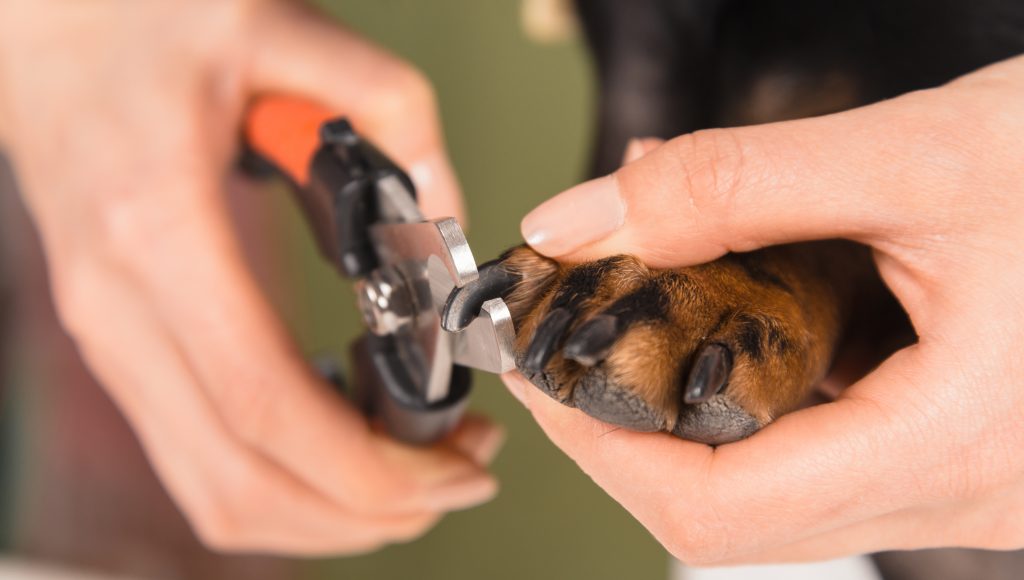Fancy Feet: The Importance of Pet Nail Trimming
 Have you been hearing the telltale click of Fido’s nails on your kitchen floor lately? Has Whiskers taken to shredding the corner of the leather sofa again? If so, it may be time to trim your pet’s nails.
Have you been hearing the telltale click of Fido’s nails on your kitchen floor lately? Has Whiskers taken to shredding the corner of the leather sofa again? If so, it may be time to trim your pet’s nails.
For many pets and their owners, pet nail trimming can be a task that invokes fear and dread. Your friends at Lone Tree Veterinary Medical Center understand your apprehension and want to help you get started on this important health and wellness task.
The Problem with Long Nails
Pet nail trimming is about so much more than good looks. Neglecting your pet’s nails can cause a host of problems for him or her. Besides being uncomfortable, long nails contribute to the following predicaments:
- Stress on the joints and internal structures of the feet
- Problems with gait
- Painful torn or ingrown nails, which can lead to infection
Keeping your pet’s nails neatly trimmed can benefit you, too! You will be saving your hardwood floors from unnecessary harm, decreasing damage to your furniture caused by scratching cats, and helping to avoid an unexpected and costly visit to the veterinarian. Trimming your pet’s nails regularly also puts you in close contact with his or her feet, which allows you to pinpoint a problem in that area before it gets out of control.
Pet Nail Trimming 101
The fear that most pet owners associate with pet nail trimming has to do with cutting the living blood vessel inside each of your pet’s nails, also known as the “quick”. Accidentally cutting the quick is painful for your pet, and can cause bleeding and plenty of stress for you.
Before you start, we recommend a one-on-one tutorial with one of our veterinarians or technicians, who will show you the proper steps involved in doing a nail trim safely. Seeing it done is the best way to learn and, there are a few tricks to doing it right, such as the correct place for the cut and the proper angle of the cut. Smoothing rough edges is another detail that should not be ignored.
In pets with light colored nails, the quick appears as an area that is closest to the paw and light pink in color. For pets with dark nails, the quick can be much harder to see, so extra care should be taken while trimming. Practice is key when it comes to pet nail trims, and over time you will be able to avoid cutting the quick.
Tips and Tricks
The following tips will get you started on a successful nail trim:
- Exercise your pet ahead of time, as a tired pet is much more compliant.
- Enlist the help of another person to keep your pet calm and settled, if needed.
- Make sure you have styptic powder or cornstarch on hand to quickly stop the bleeding if the quick is accidentally nicked.
- Some pets have an extra nail higher up on the leg, known as the dewclaw, make sure to trim this as well.
We Can Help!
Regular nail trims are essential to your pet’s mobility and overall foot health. Depending on your pet’s activity level, most dogs require a nail trim every one to two months, and most cats require a nail trim every two to four weeks.
Don’t hesitate to ask one of our veterinarians or veterinary support staff to demonstrate proper nail trimming technique for you. We will also be happy to perform a nail trim during your pet’s exam or on a walk-in basis. For those of you who have your pet groomed with us, our professional groomers automatically include a nail trim with every grooming service.



